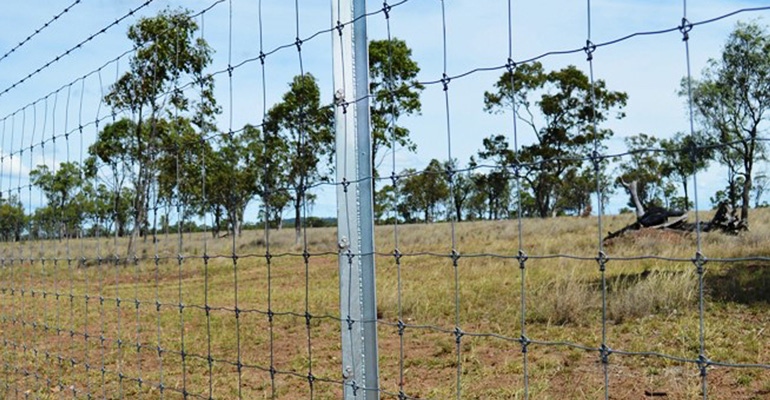August 6, 2019

Deciding on the appropriate fencing for your farm can be tricky and costly. Working in the steel fence industry since 1995, Steve Sarson, a Bekaert Fence Pro regional sales manager, explains that fencing isn’t a one-size-fits-all product. “There are different styles of fence and products within each style that work for certain animals or containment or exclusion goals,” he says.
Before making a recommendation, he asks two questions: What type of animal are you trying to contain or exclude? What safety precautions do you want to take?
“The type of fence you need for horses can be different from what you need for cattle or sheep,” Sarson says. For horse farms, he recommends woven wire with a smooth S-knot style that won’t catch on their hide if they rub against it. And, he always asks if there are foals on the farm. “We have a fence style available which prevents foals from getting their leg stuck in the fence,” he says.
How will you use the fence?
For cattle and sheep producers looking to replace old fencing or install a new fence for rotational grazing on pasture and rangeland, many options are available depending on stocking density and preference.
“Depending on stocking densities, a fence is either a physical barrier or a boundary,” Sarson says. “If you are grazing on a 10,000-acre cattle ranch out West where forage is scarce and stocking densities are low, a fence is a boundary. Whereas in the eastern part of the country where forage is plentiful, densities increase, and the fence becomes much more of a physical barrier.”
Regional differences also impact the style of fencing livestock owners prefer. Name an area of the country, and Sarson knows the preferred style of fence. East of Virginia, it’s smooth wire electric fence; Virginia and south, it’s barbed wire. East of the Mississippi, producers want four-point barbed wire; west they use two-point.
And not all fencing is designed to keep animals in. Sarson works with municipalities, vineyards, orchards and others looking for exclusion fencing to keep deer, feral pigs and rabbits out. “I’ve seen deer in cities where I wonder where they live. Before they began using our exclusion fence products, Princeton, N.J., had a horrendous problem; plants couldn’t grow in city parks, and everything from 6 feet down on the trees is gone.”
Calculate cost per foot
Regardless of purpose or style preference, before buying a roll of fencing, consider cost per foot. “The key to buying fence is to know your cost per foot,” he says.
Producers can most often get the best price if they purchase the strongest wire. Calculating cost-per-foot often begins with tensile strength. Tensile strength is the resistance of steel or other material to break under pressure. The greater the tensile strength, the smaller gauge, lighter weight and less flexible the steel, which reduces cost per roll, risk of sag and number of fence posts needed to complete the project.
“High-tensile strength is tough for some folks to understand because the gauge is smaller, meaning the wire is thinner, yet it is stronger, lasts longer and requires fewer posts,” Sarson says. “Cattlemen will look at the high-tensile barbed wire and say there’s no way that skinny barbed wire can be as good as the 12 gauge. That’s when I put it into the tensile wire machine and break it. Education is so important.’”
High-tensile wire fencing products have been available since the early 1970s. Bekaert has manufactured their own fencing products since the 1880s. The company also applies protective coatings to wire. The finishes prevent corrosion and protect a fence’s longevity.
Determining the protective finish needed depends on the region, Sarson says. “It’s interesting, in the west — Kansas, Dakotas, Colorado, Wyoming, Montana — a Class 1 coated wire will last almost as long as a Class 3 coating in the East because in the East we have acid rains, high humidity and coastal air.”
If you have questions about choosing a fence or are looking for installation tips, visit the Bekaert website at fencing.bekaert.com.
Source: Bekaert, which is responsible for information provided and is wholly owned by source. Informa Business Media and its subsidiaries aren’t responsible for any content in this information asset.
You May Also Like




